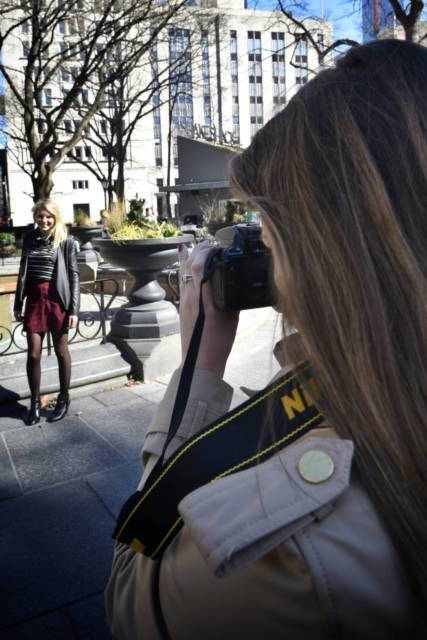Brands are using the time-tested tactic of company-funded scholarships to connect with young consumers.
Scholarships perpetrate a purpose-driven approach to build brand loyalty and generate positive consumer sentiment, providing marketing teams with an opportunity to leverage affiliations and supply funnels with non-traditional ads and social content. These are equally advantageous to students and brands; students are provided with support to pursue passions and develop their careers, and help brands reach a demographic that is increasingly disengaging with traditional marketing.
On Thursday, DJ Khaled, Get Schooled and Viacom announced Key To Social Change—an extension of the Major Keys campaign that will award more than $20,000 in scholarships beginning April 2. The program offers “keys” for academic achievement much as a Boy or Girl Scout earns a badge. Categories include personal finance, communication skills and goal setting, among others. Key To Social Change adds another goal for students aimed at making social change through one’s online presence. The program will teach best practices for effective digital communications, including guidance on platform selection, content development and messaging.
Taco Bell started the Live Mas Scholarship in 2015 to propel creatives and dreamers ages 16-to-24. The scholarship is available to the public as well as Taco Bell employees whose passions stand outside of athletic and traditional academic fields. It gives recipients access to mentors, professionals and even “day-in-the-life” opportunities through grants.
To date, the Taco Bell Foundation has donated $3 million, planning to double that figure to $6 million by the end of this year.
“It’s mutually beneficial because the kids are receiving fantastic experiences and we’re getting fantastic creative content with them. The brand loyalty we develop with them is huge,” Jennifer Walker, director of strategic development for Taco Bell Foundation, told AListDaily.

“All companies have the ability to give away money—but we’re more than a bank. The scholarship has become a way for us to identify with our customers. That age demographic is truly who are customers are, and we want to set them up for success. We have big hearts and want people to feel good about our brand, too.”
Much like brands that support STEM education, a cause marketing strategy with scholarships directly reaches current and future customers and lets them know that the company is aligned with their passions and interests. The move is a valuable one—especially since Americans owe over $1.48 trillion in student loan debt. The University Network found that 83 percent of students favorably view brands that offer a scholarship.
To raise additional awareness for its cause marketing efforts and empower kids to take creative risks, Taco Bell tapped into its scholars and merged their creativity with its marketing teams for its campaigns “For The Kids, By The Kids” and “Eat A Taco, Feed A Dream.”
“We pulled kids from all walks of life and had them help us craft marketing messages,” said Brian Darney, senior manager of advertising and branded content for Taco Bell. “Not only did we give them the keys, we let them drive all aspects of the campaigns.”
The QSR chain enabled recipients by bringing them to the decision-making table and asked them to offer creative input and direction of the marketing plan. It included ideating, writing scripts, directing and starring in commercials as well as packaging assets with outside partners and Taco Bell Design, the brand’s internal advertising agency.
“The traditional advertising messages that we produce are fun, but I’d say this is even more fun because we’re doing it with them. It’s a passion project,” said Darney. “If there is ever an opportunity for a brand to get involved, they should, and that’s the approach we’ve taken. We want to prove that we’re doing what we’re saying with our cause marketing. We’re walking the walk, and talking the talk, so to speak.”
Darney said it’s not enough for brands just to be “cool” these days. “Consumers care about brands with a cause,” he said. “Being different can be challenging from a brand standpoint. You have to make an impact.”
The scholarship strategy has been a resourceful one for the restaurant chain, Darney said, because of the positive response it’s also been enjoying through social channels. Such insights have led Taco Bell to grow the program exponentially to upward of $10 million in the next few years.
Dr Pepper is also adding its own spin to a scholarship approach. The Dr Pepper Tuition Challenge has become a college football tradition at halftime and a game within a game during each of the Power 5 conference championship contests every December. The soft drink company has awarded nearly $10 in tuition since 2008 with a gamified philosophy that pits students against one another in a football-throwing face-off. The winner who nets the most balls into cans of Dr Pepper wins a tuition check. In return, the beverage giant wins much coveted earned media value as the comedic hijinks plays out on TV and spills into social media.
Natural Light took a similar approach during the Super Bowl last month with a cause marketing contest designed to pay off a total of $1 million in debt for 25 students.
Another marque trying to make an impact with its cause marketing, connect with consumers through scholarships and source content for social channels is Nikon. The camera-company marked its centennial anniversary with the Nikon Storytellers Scholarship, a $100,000 scholarship fund for emerging content creators.
In addition to making a commitment to supporting the next generation of visual artists, Nikon is using the power of photography to connect young creators to the brand on its digital platforms through user-generated content as part of the curated “Nikon100 List.” Since the start of the 100-day campaign, Nikon has featured a new photographer everyday by sharing their photos on the Nikon Instagram channel with the hashtag #Nikon100.
“The goal with the scholarship is to introduce current and new users to the brand and build relationships with consumers that can continue to grow along with their experiences and careers,” said Kosuke Kawaura, director of marketing, communications and planning for Nikon. “Through the scholarship, Nikon will be top of mind with this very important market segment.”
Kawaura said cause marketing makes sense for Nikon because brand loyalty is usually rooted early among young photographers, and that it’s incumbent upon companies to foster the talent of tomorrow in any way possible.
“By supporting scholarships, brands can connect with consumers in a relevant way and become a part of this larger narrative, helping to empower students to achieve their future dreams and aspirations,” he said.

